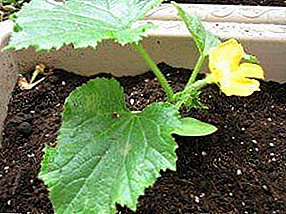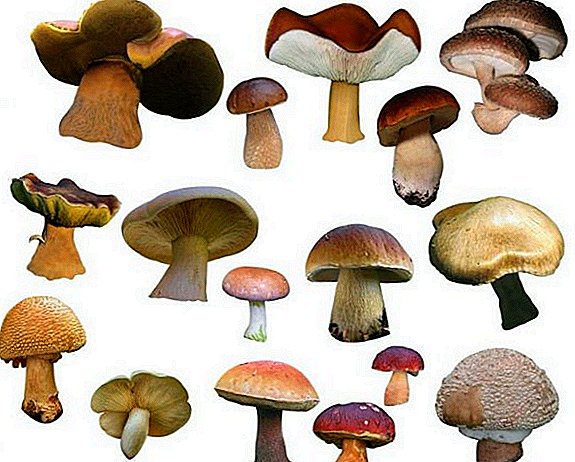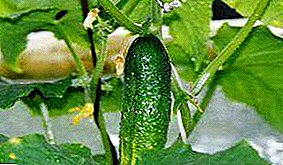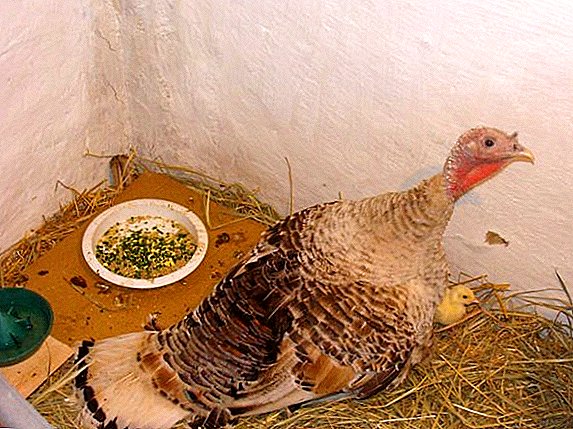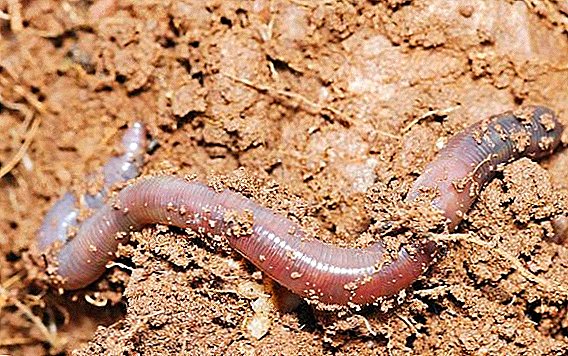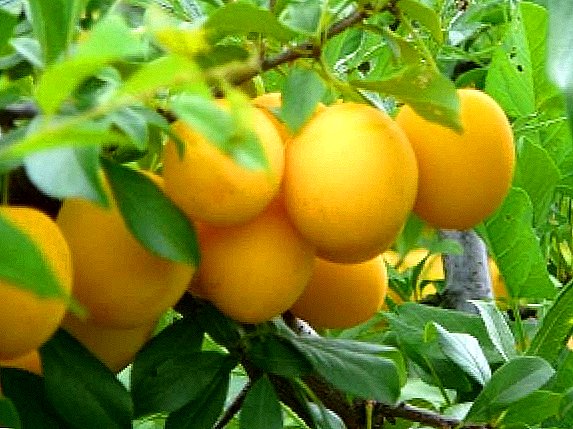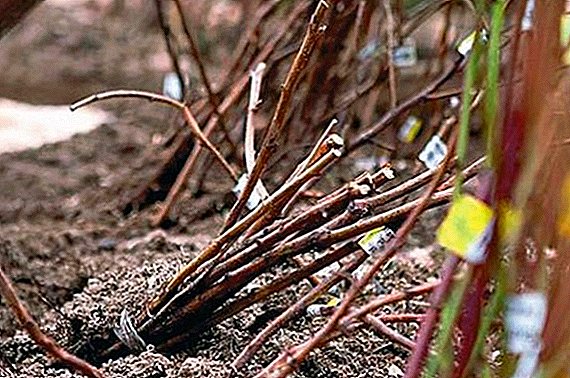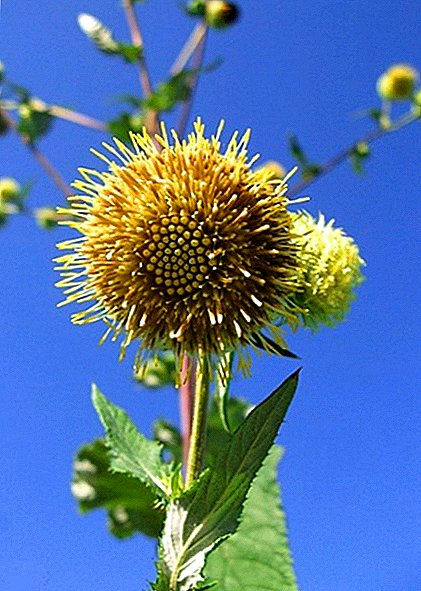 The generic name "Alfredia" refers to a whole genus of herbaceous plants from the family Astrovye or Compositae. Most often, under this name they mean the ataman-herb, or royal root, whose scientific name is Alfredia, wilted (Alfredia Cernua (L.) Cass). This plant is known to little because of the limited habitat. However, it has many healing properties, for which it has long been valued in traditional medicine. Today we will look at how this plant affects the body, in what areas of folk healing is used, and what are the conditions for growing ataman grass on a home plot.
The generic name "Alfredia" refers to a whole genus of herbaceous plants from the family Astrovye or Compositae. Most often, under this name they mean the ataman-herb, or royal root, whose scientific name is Alfredia, wilted (Alfredia Cernua (L.) Cass). This plant is known to little because of the limited habitat. However, it has many healing properties, for which it has long been valued in traditional medicine. Today we will look at how this plant affects the body, in what areas of folk healing is used, and what are the conditions for growing ataman grass on a home plot.
Botanical description
Alfredia, the wilted, is the representative of large and strong perennial herbaceous plants. It grows up to 2.5-3 m, has a powerful stem up to 5 cm in diameter at the root part. The rhizome is short with many appendages, the stems are colored dark brown, empty inside, rough and grooved to the touch.
Increased branching of the stems is noted in the upper part of the alfredia. The middle and lower leaves differ externally: in the lower part of the plant they are very long, up to 50 cm long and 30 cm wide, oblong or heart-shaped with a sharp tip and jagged edges, a rich green shade on top and whitish on the back side.
The middle leaves have a smaller size, oblong acute shape, a scape wide, as if “embracing” the stem. The flowers are colored in a yellow-green shade, large (up to 2.5 cm in length), have a flying tuft that disappears very easily. 
Did you know? Representing such an impressive size of the plant, it becomes unclear why Alfredia is called wilted. It's all about the inflorescences - their large 5-centimeter boxes are tilted down, resembling a drooping head.
The seeds of this plant are also quite large - up to 7 mm in length and about 3 mm in width, gray-brown, oblong conical shape. Alfredia wilted refers to a good honey plants.
Familiarize yourself with the beneficial properties of such medicinal plants as echinacea, saxurey, thistle prickly, elecampane, cmin, celandine, dogrose, chamomile, jaundice, valerian, common tansy, hawthorn, flaxberry, fenugreek, wormwood.
Distribution and habitat
The unknownness of this plant is explained by a very limited habitat: Alfredia, who is drooping, grows in the mountainous regions of Central Asia, in the Altai Territory, Kazakhstan, Mongolia, and Mountain Shoria. It prefers high-mountainous terrain: meadows, meadows and scrub thickets, mixed forests (fir-spruce and aspen-birch). 
Chemical composition
The aboveground part of alfredia contains the following substances:
- terpene compounds;
- tannins;
- micro and macronutrients;
- aromatic acids (vanillic, cinnamic, chlorogenic, salicylic);
- fatty acids (palmitic, linoleic, etc.);
- amino acids;
- polysaccharides;
- simple phenolic compounds;
- flavonoids;
- steroid alcohols (phytosterols).
Beneficial features
The extract from this plant is used in monotherapy and as part of herbal.  Alfredia, wilted, has a tonic, tonic effect on the body, relieves stress and fatigue, increases the resilience of the brain and the body as a whole to stress and negative external effects.
Alfredia, wilted, has a tonic, tonic effect on the body, relieves stress and fatigue, increases the resilience of the brain and the body as a whole to stress and negative external effects.
Important! The best therapeutic effect is the use of the extract from this plant, infused with 95% alcohol.
The use of alfrediya dipped has the following effects on the body:
- nootropic (improvement of cognitive functions, brain activity, improvement of memory and learning, etc.);
- pain killer;
Analgesic properties also have: anemone, chernokorin medicinal, canoper, spurge, veronika officinalis, mint and stonecrop.
- tonic;
- hypotensive;
- antiharmy;
- anticonvulsant;
- sedative and anxiolytic (reducing anxiety, anxiety);
- diuretic;
- antioxidant.

Medical applications
The rich chemical composition determines the widespread use of alfredia in the folk and official medicine.
So, Alfredia is used for the following diseases:
- nervous disorders, diseases of the central nervous system (including with panic attacks, increased anxiety and fear, neurasthenia, schizophrenia and dizziness, emotional, nervous or physical overstrain);
- dermatological diseases, including for wound healing (local use in the form of compresses and lotions);
- high blood pressure;
- stomach pain;
- urinary incontinence;
- epilepsy (as part of fees);
- with hangover syndrome (in fees);
- diseases of the joints and the musculoskeletal system as a whole.

Important! Unfortunately, due to the short time of testing funds on the basis of this plant, it has not yet been possible to systematize the contraindications to their use. Therefore, the use of drugs based on Alfredia must be coordinated with your doctor and approved by him.
It is also applicable to the general strengthening and healing of the body (as part of fees). As a preventive measure, you can periodically use tea from this collection: 1 tsp each. Alfredia wilted and Moldovan snakehead, 1 tbsp. l oregano Mix the mixture with 2 cups boiling water, drink after 20 minutes of infusion twice a day.
Growing and caring for plants
Alfredia, wilted, does not have a decorative value; therefore, growing at home is produced solely for the purpose of obtaining medicinal raw materials. This plant is unpretentious and hardy, so that this should not cause any special difficulties. 
Conditions of detention
Alfredia can be grown inside the house, in a pot, or outdoors in the open field. In any case, the place for the content should be well illuminated by the sun, several hours a day direct rays should fall on the flower.
The house is optimal to choose the southern and western sides. On the plot you need to find a spacious, well-lit place where excessive moisture will not accumulate.
Soil and fertilizer
Nutritiousness of the soil and the pH level does not play a significant role, that is, good growth rates will be in neutral and slightly acidic / alkaline soil, poor or enriched with nutrients. However, there must be good drainage, breathability and constant moistening.  For pot growing, you can choose light ready-mix soil mixtures, which include sheet and sod land, sand. You can make any complex mineral fertilizers according to the instructions.
For pot growing, you can choose light ready-mix soil mixtures, which include sheet and sod land, sand. You can make any complex mineral fertilizers according to the instructions.
We recommend reading about what types of soil exist, what system of fertilizer for different soils, and also why you need soil mulching.
Watering and moisture
Alfredia, wilted, needs a constantly high level of humidity. Based on the climatic features of your region, temperature, daylight and season, the frequency of watering should be at least 3 times a week. For irrigation you need to use soft, separated, warm water. If the plant is grown indoors, you can moisten the leaves with a spray bottle.
Temperature
Alfredia is very undemanding to the temperature regime. Growing in the harsh mountainous areas in nature, it tolerates cold winters without additional shelter. 
Breeding
It is easiest to propagate the ataman grass with seeds. Since the seeds of such a rare plant are difficult to obtain in garden stores and nurseries, most often they have to be ordered online.
You can plant seeds in open ground (in May) or on seedlings (in late March - early April), in the latter case, planting seedlings in open ground falls at the beginning of June.
Before planting, seeds should be soaked for several hours in water or a damp cloth. Seedlings are planted in plastic or peat cups, the depth of the bookmark is about 2 cm. The earth should be moistened and the containers should be wrapped with a film to create a small greenhouse. On average, after 15-20 days, the first seedlings appear.
Important! Watering at this time should be abundant, but in no case can not fill the seedlings and create a swamp in containers!

A permanent place should be planted when the seedlings are stronger, reaching a height of 20-30 cm. Alfredia grows to impressive size, so the distance between the seedlings during planting should be at least 70 cm. When breeding seedlings, the plant can give color in the second year, but at Direct planting of seeds in the soil in most cases begins to bloom only after 3-4 years.
Collection and preparation of raw materials
You can harvest almost all parts of the plant: leaves, buds and roots. It is necessary to collect raw materials only in dry, calm, warm weather. The flowering period lasts from the third decade of July to the first decade of August. At this time, and you need to collect flowers and leaves, then dry them.
For drying, it is necessary to decompose the raw material in a single layer on a cloth or paper inside a dry room with good air circulation. In the first half of autumn, the root part must be harvested: for this, it is washed and dried in warm, well-ventilated rooms. You can store raw materials up to 2 years in glass containers or linen bags. 
Possible difficulties in growing
For the successful cultivation of alfredia at home, it is necessary to create conditions for her as close as possible to the natural ones. First of all, there should be a good level of lighting and humidification.
- With a deficit of moisture, the plant fades, turgor decreases. Especially dangerous is the lack of moisture for germinating seeds and young, fragile plants.
- With a shortage of ultraviolet light, the plant flowers are underdeveloped.
Pests, diseases and prevention
The plant is not susceptible to bacterial, fungal or viral infections, as well as attacks by pests. However, in rare cases, for prevention, plants can be treated with complex biologics, such as "Trichodermin", "Planriz", "Actofit".
Did you know? About 40% of modern pharmaceutical preparations have a vegetable base - this is an average percentage, because, for example, for the treatment of cardiovascular disorders, medicines are 80% made up of plant materials.

In pharmacies, you can buy herbs or tincture of Alfredia, but you can easily grow this medicinal plant yourself. Despite the small popularity, it is impossible to underestimate the beneficial properties of ataman grass, because it can be used in the fight against many diseases.


